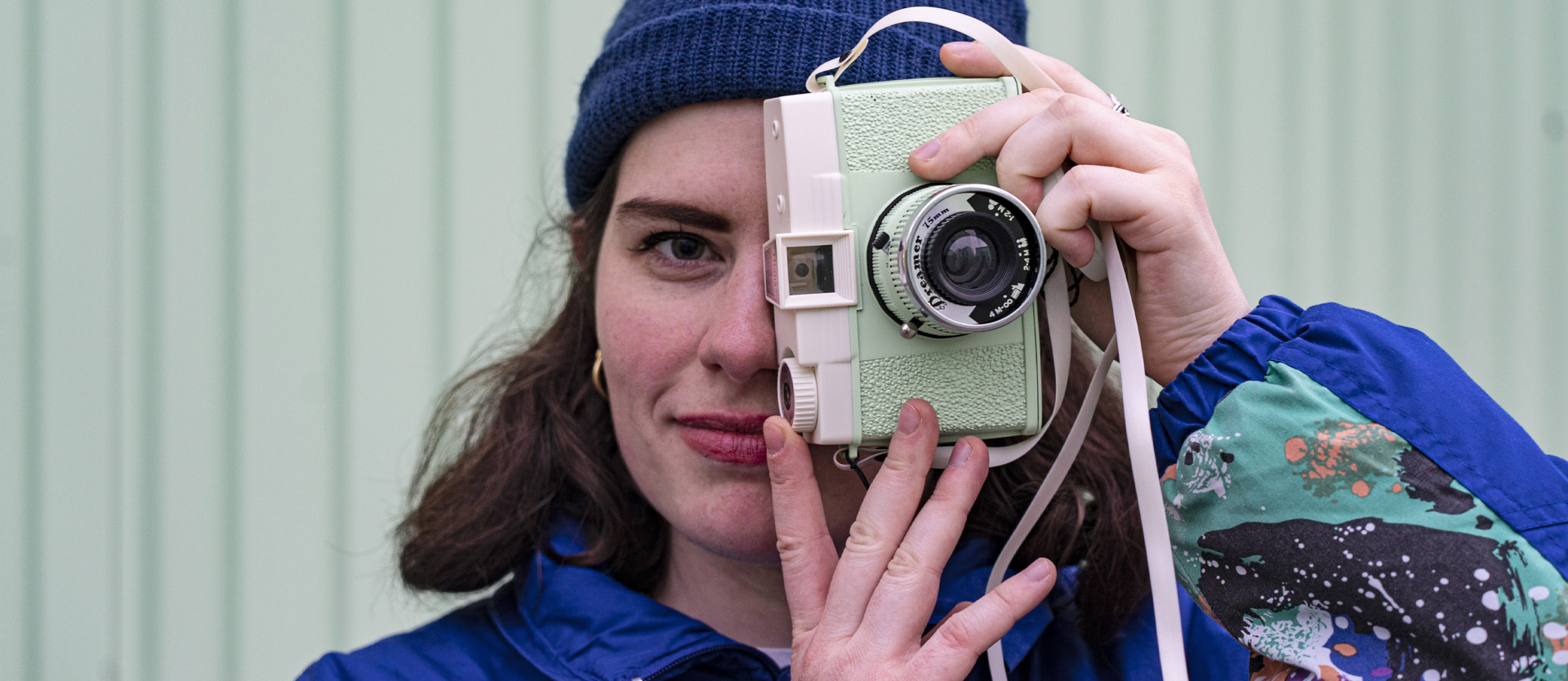
Diana F+ on the test bench

A 20-year-old 120 Redscale film in my mailbox.
A 20-year-old 120 Redscale film in my mailbox. Medium format. "Found it in my mother's closet, hope it's still okay," is the message from my friend Anna, prompting me to embark on my next photographic adventure. Actually, I wanted to get a cheaper lockdown hobby, but as a photographing and record-listening person, that somehow does not work.
So here it must be, a Lomography Diana F+, in which I can insert the dusty film. An investment of 30 euros on EbayKleinanzeigen and two days later I hold a turquoise plastic frame with the weight of a fly in my hands. Carefully I thread the roll film into the plastic thread. Is this really not a toy camera that just looks like it takes pictures, I think to myself as I press down on the silent shutter release lever on the lens for the first time. Not even a short click. And now? I turn the camera around and check the small dark red window on the back, where I can see how many more pictures I can take. Blurred, with the help of my cell phone flashlight, I can make out a "1". I continue to turn the wheel. There's no resistance to tell me when I've reached the next picture. There it is at last, the "2". And I'm ready for the next ten noiseless clicks that lie ahead of me!
Probably the biggest change from the rest of my camera collection is the Diana F+'s few setting options. The plastic camera in vintage design has a total of three setting levels. A small lever on the lens lets me switch between daytime shooting and long exposure. Small weather symbols are the guide for the appropriate exposure. I then estimate the distance between the camera and my subject and adjust the focus with the focus ring. Always with the thought in mind that I can only release the shutter a total of twelve times. So I stand on the mat a lot longer than usual until I have finally decided what I want to photograph and with which settings.
No risk no fun I thought and started directly with the most challenging challenge that you can do with such an old film: Long exposures at night, the shutter button pressed for up to a minute and stacked stones as a background - so that it is less shaky I have unceremoniously a self-made tripod on the legs. At the beginning I photographed wildly according to the motto try and error, but after the first developed film I realized: it needs frustration tolerance! Because the pictures were unusable.
I made friends with the idea of seeing it as an experiment and started making little notes about the settings. After the twelfth time of releasing the shutter, I rewound the film at least twice as carefully as I had initially threaded it and opened the shutter. The utmost caution is required here. Because if the film is not wound tightly enough, it can quickly turn into photographic waste. In the meantime, I know: It took the mistakes and attempts until I could appreciate the mysterious plastic box. Still, the final prints remain a surprise bag! Whether it's a blurred art accident or a skillful "shot" with a dreamy retro look, each snapshot is unique.












